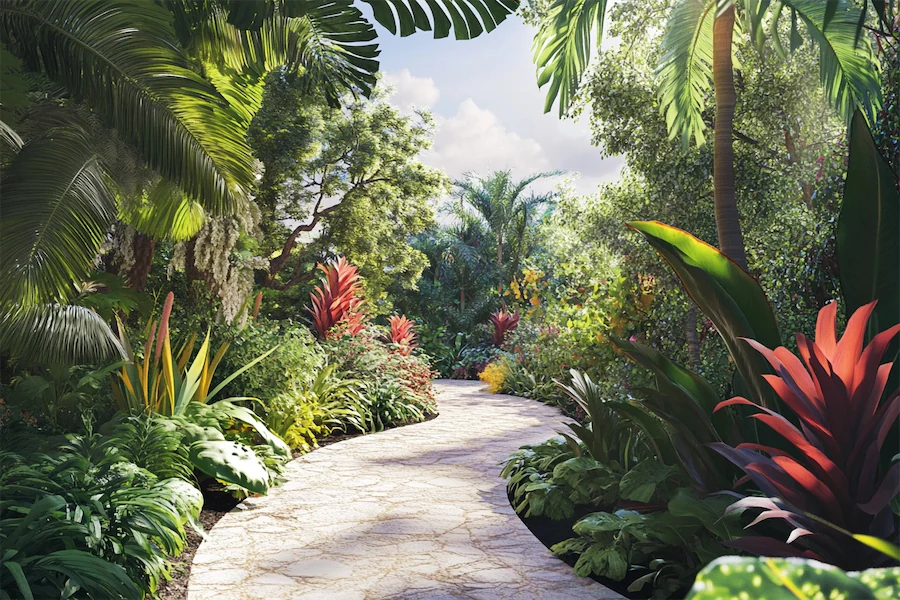A Subtropical Garden is a lush, vibrant landscape designed to emulate the natural beauty of subtropical regions. Characterized by diverse plant species, bold foliage, and dynamic textures, these gardens thrive in climates with mild winters and warm, humid summers.
History and Origins of Subtropical Gardens
The concept of subtropical gardens has evolved over centuries, influenced by the rich biodiversity of regions like Southeast Asia, parts of South America, and coastal areas of Australia. Gardeners and landscapers have long been inspired by the dense vegetation and exotic plant life native to these areas, incorporating similar elements into garden designs to create immersive, naturalistic environments.
Key Features of Subtropical Gardens
- Diverse Plant Selection: Incorporating a variety of plants, including hardy palms, hibiscus, bird of paradise, and lilies, adds depth and interest to the garden.
- Layered Planting: Combining trees, shrubs, and ground covers to create a multi-tiered canopy effect, adding depth and visual intrigue.
- Bold Textures and Colors: Utilizing plants with large, glossy leaves and vibrant flowers to create a dynamic and engaging visual experience.
- Water Features: Incorporating elements like ponds or fountains to enhance the tropical ambiance and support local wildlife.
Applications of Subtropical Gardens
- Residential Landscapes: Homeowners can transform their yards into exotic retreats by selecting appropriate subtropical plants and design elements.
- Public Spaces: Parks and botanical gardens often feature subtropical sections to educate visitors and showcase diverse plant species.
- Commercial Properties: Businesses may incorporate subtropical designs to create inviting and distinctive environments for clients and employees.
Considerations When Designing a Subtropical Garden
- Climate Compatibility: Ensure that the selected plants are suitable for the local climate, particularly regarding temperature and humidity levels.
- Soil Preparation: Amend the soil to provide adequate drainage and nutrients, as many subtropical plants require well-drained, fertile soil.
- Maintenance: Regular pruning, mulching, and monitoring for pests are essential to maintain the health and appearance of the garden.
- Watering Needs: Establish a consistent watering schedule, as subtropical plants often require ample moisture, especially during dry periods.
Conclusion
Creating a subtropical garden allows for the cultivation of a vibrant, diverse landscape that brings the essence of exotic locales to your doorstep. By carefully selecting suitable plants and incorporating key design elements, you can develop a thriving garden that offers visual appeal and a serene retreat.
